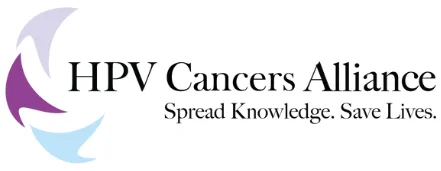Head & Neck Cancer Treatment
Head and neck cancer encompasses a group of cancers that develop in the mouth, tongue, throat, nose, or related areas. Oropharyngeal cancer, a type of head and neck cancer, forms in the oropharynx- the middle part of the throat, including the back of the tongue, soft palate, tonsils, and throat walls. Treatment options vary based on the location and stage, including surgery, radiation, and advanced therapies aimed at preserving function and quality of life.
In the Office with Dr. Marshall Posner Summary
HPV and Head & Neck Cancer
-
- Head and neck cancers, especially those caused by HPV, have risen since the 2000s, with HPV-positive oropharyngeal cancer now creating up to 75% of cases at Mount Sinai.
- The rise is linked to societal changes, such as increased sexual contact and population mixing, which have increased HPV transmission.
HPV-related cancers are now being detected in various head and neck sites, including the nasal cavity, with about 50% of sinus cancers linked to HPV.
How HPV Cancer Spreads
-
-
- HPV spreads via bodily fluids (saliva, semen, vaginal/anal secretions) to mucosal membranes, not through blood.
Direct contact between sexual organs and other mucosal membranes (like the mouth or nose) can lead to transmission.
- HPV spreads via bodily fluids (saliva, semen, vaginal/anal secretions) to mucosal membranes, not through blood.
-
HPV Cancer Screening
-
- No current reliable screening for head and neck cancers like there is for cervical cancer (e.g., Pap smear).
- Research shows antibodies to high-risk HPV may appear up to 10 years before cancer.
- A blood test for cell-free HPV-DNA is being developed but is not yet validated.
- Best approach for screening: watch for symptoms (e.g., sore throat, neck lump, difficulty swallowing) and consult an ENT.
- HPV vaccination is recommended for those under 45, potentially helping prevent further cancers.
Risk of Second HPV Cancer
-
- Secondary HPV cancers, though rare, have occurred (e.g., anal cancer followed by tonsillar cancer).
- Cell-free HPV-DNA testing could serve as a screening tool for past HPV cancer survivors, but it’s not yet validated.
Treatment for Head & Neck Cancers
-
- Treatments include surgery, chemotherapy, and radiation, often in combination.
- Despite the research, there has been no Phase 3 clinical trial that effectively reduces radiation doses.
- Excessive radiation leads to severe long-term side effects, including scarring, fibrosis, dental failure, and secondary cancers.
- There’s a push for reduced radiation doses in treatment but no official approval outside of clinical trials.
Challenges with Current Treatment Protocols
-
- Patients cannot receive reduced radiation doses unless participate in a clinical trial.
- A patient opting out of a trial could argue inadequate treatment if relapse occurs, as the reduced dose is not standard.
Patients diagnosed with recurrent/metastatic (R/M) squamous cell carcinoma of the head and neck (SCCHN) have limited options. Research for this condition is vital. INCAGN 2385-203 is a clinical study now enrolling adults with R/M SCCHN.
Current Clinical Trials – Head and Neck Cancer
Most patients with recurrent or metastatic squamous cell carcinoma of the head and neck (R/M SCCHN) either do not respond well to standard treatments or initially respond but later experience disease progression.
In addition to PD-1 (a known target in cancer treatment), other immune checkpoints like LAG-3 and TIM-3 might also suppress the immune system, leading to poorer outcomes in R/M SCCHN.
The INCAGN 2385-203 study is testing a new treatment combination that includes retifanlimab (an anti-PD-1 drug) with either anti-LAG-3, anti-TIM-3, or both, to see if it’s more effective than retifanlimab alone. More details about this study can be found at Incyte Clinical Trials [incyteclinicaltrials.com].
Chow LQM. Head and neck cancer. N Engl J Med 2020;382:60-72.
Jie HB, Gildener-Leapman N, Li J, et al. Intratumoral regulatory T cells upregulate immunosuppressive molecules in head and neck cancer patients. Br J Cancer 2013;109:2629-2635.
Shayan G, Srivastava R, Li J, Schmitt N, Kane LP, Ferris RL. Adaptive resistance to anti-PD1 therapy by Tim-3 upregulation is mediated by the PI3K-Akt pathway in head and neck cancer. Oncoimmunology 2016;6:e1261779.
